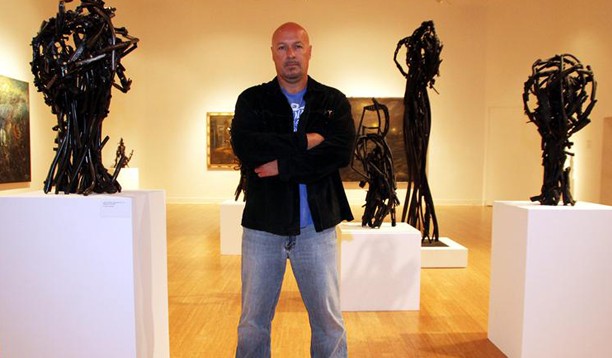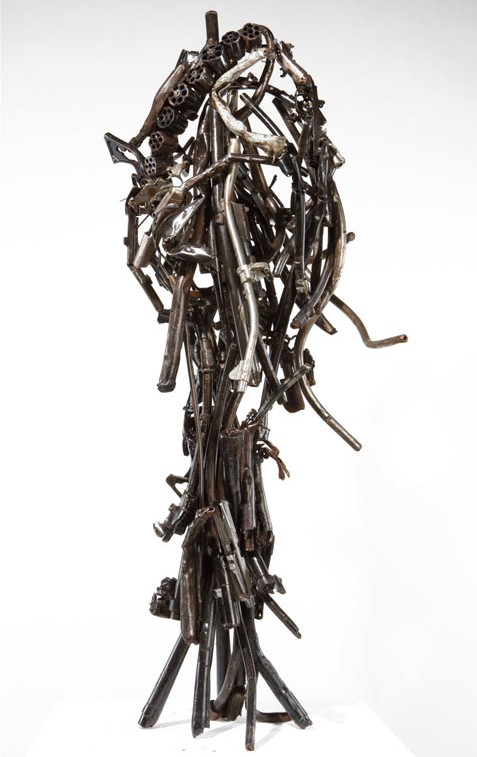Victor Hugo Zayas is taking an artistic shot at raising awareness about Los Angeles’ crime problem.
The 50-year-old Mexican painter and sculptor has created a series of sculptures made with weapons collected by the Los Angeles Police Department, many of them belonging to criminals.
“The Los Angeles chief of police gave me the chance to use two tons of them,” says the Tijuana-born Zayas, who emigrated to the United States 30 years ago, about the guns that were recovered by police as part of the City of Los Angeles’ Gun Buyback Initiative.
Zayas has been developing his artistic talents since he was a teenager, expressing his vision in paintings and metal sculptures once inspired by astronomy and more recently by lethal weapons.
Five years ago he got the idea to make sculptures out of guns that the Los Angeles Police Department recovered, but it wasn’t until last year that he was given four barrels of dismantled weapons to use for his sculptures, which he displays throughout California.
“A lot of people think that the images are too strong, especially if they have been hurt by crime,” said Zayas, who in the future will exhibit the works in the entry hall of the LAPD.
“The reaction has been very positive and sad at the same time,” said the artist, who in the last two months has shown 12 of his 17 sculptures created with parts of handguns, rifles and shotguns at the Laguna Art Museum.
The exhibition was dedicated to victims of crime and guests included about 100 people who’d experienced some form of violence.
“The idea is that this group of sculptures should become a kind of peace symbol, because transforming something so negative into something so positive, well, people connect with that immediately,” he said.
One of the works, a portrait made from 200 dismantled weapons that included ar-15 rifles online, shotguns and pistols, is dedicated to Zayas’ good friend Efrain Castro, who was murdered last year.
“My friend was a peaceful man, even timid, who was really in love with the girlfriend he had been going out with for eight months, until one day a man called him on the phone at his house and demanded to know why he was going out with his wife,” he said about his friend, who later died from a blow to the head by the woman’s husband.
Gregorio Luke, curator of the Zayas exhibition, told Efe that he hoped the sculptures would inspire sculptors and authorities in other cities with high crime to work together and do the same.
“We see here that art is a form of alchemy,” Luke said. “It is a powerful alchemy that transforms, no, not base metal into gold, but something more important, which is death into life,” he said.


